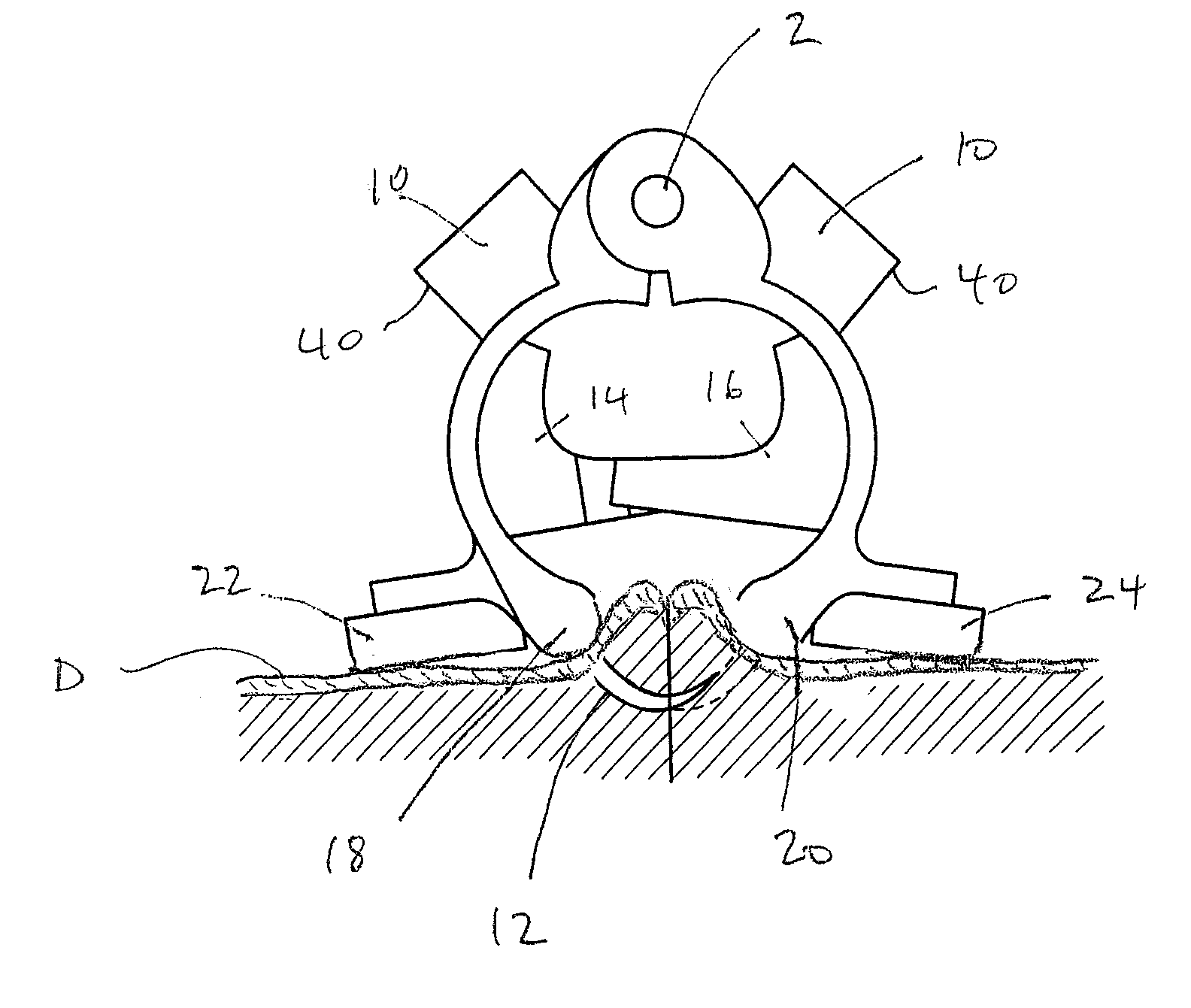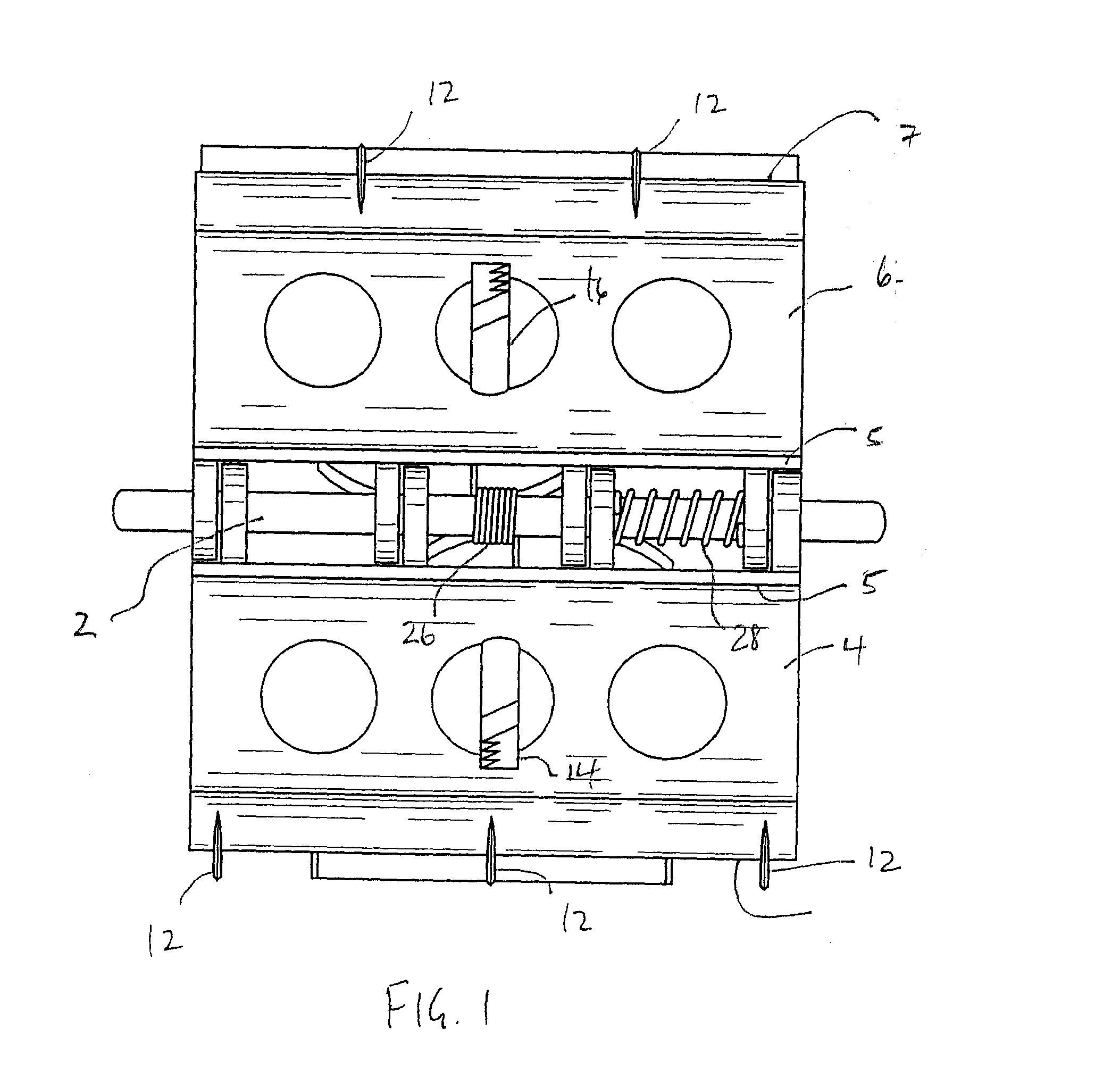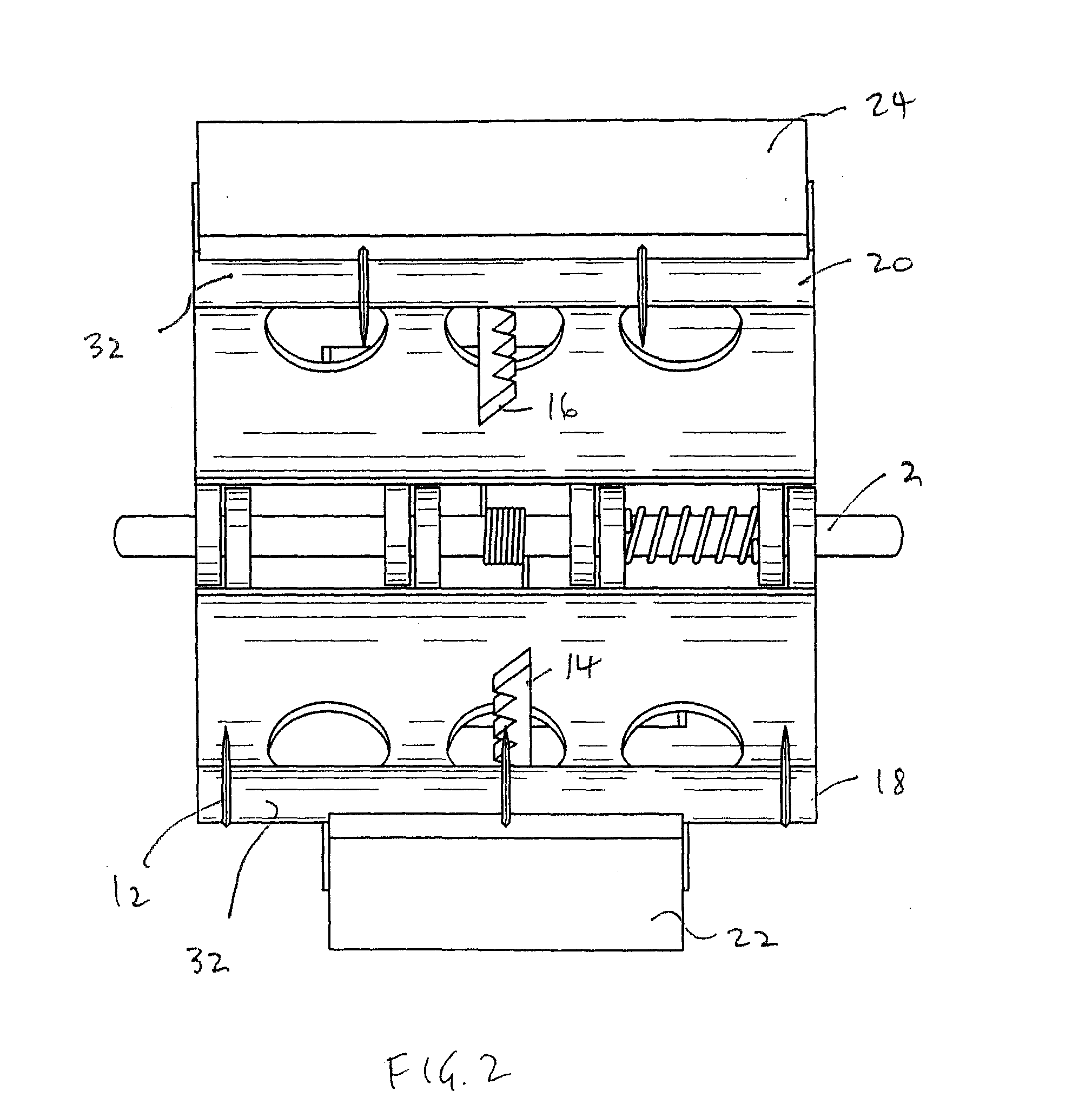Wound clamp
a technology for wounds and clamps, applied in the field of wound clamps, can solve the problems of slow tourniquets, inability to suture or staple wounds, and inability to secure wounds, and achieve the effects of enhancing the closure of wounds, minimizing the risk of bleeding out, and minimizing the loss of blood
- Summary
- Abstract
- Description
- Claims
- Application Information
AI Technical Summary
Benefits of technology
Problems solved by technology
Method used
Image
Examples
Embodiment Construction
[0036]The invention relates to a wound closure device. When describing the present invention, all terms not defined herein have their common art-recognized meanings. To the extent that the following description is of a specific embodiment or a particular use of the invention, it is intended to be illustrative only, and not limiting of the claimed invention. The following description is intended to cover all alternatives, modifications and equivalents that are included in the spirit and scope of the invention, as defined in the appended claims.
[0037]In general terms, one embodiment of the wound closure device is configured in a clam-shell type configuration, with a first opposing member (4) and a second opposing member (6) pivotally attached to each other about a pin (2) which defines a longitudinal axis of rotation. Each of the opposing members having an outer face and inner face and two ends. In one embodiment, each opposing member approximates a bisected cylinder which has a proxi...
PUM
 Login to View More
Login to View More Abstract
Description
Claims
Application Information
 Login to View More
Login to View More - R&D
- Intellectual Property
- Life Sciences
- Materials
- Tech Scout
- Unparalleled Data Quality
- Higher Quality Content
- 60% Fewer Hallucinations
Browse by: Latest US Patents, China's latest patents, Technical Efficacy Thesaurus, Application Domain, Technology Topic, Popular Technical Reports.
© 2025 PatSnap. All rights reserved.Legal|Privacy policy|Modern Slavery Act Transparency Statement|Sitemap|About US| Contact US: help@patsnap.com



